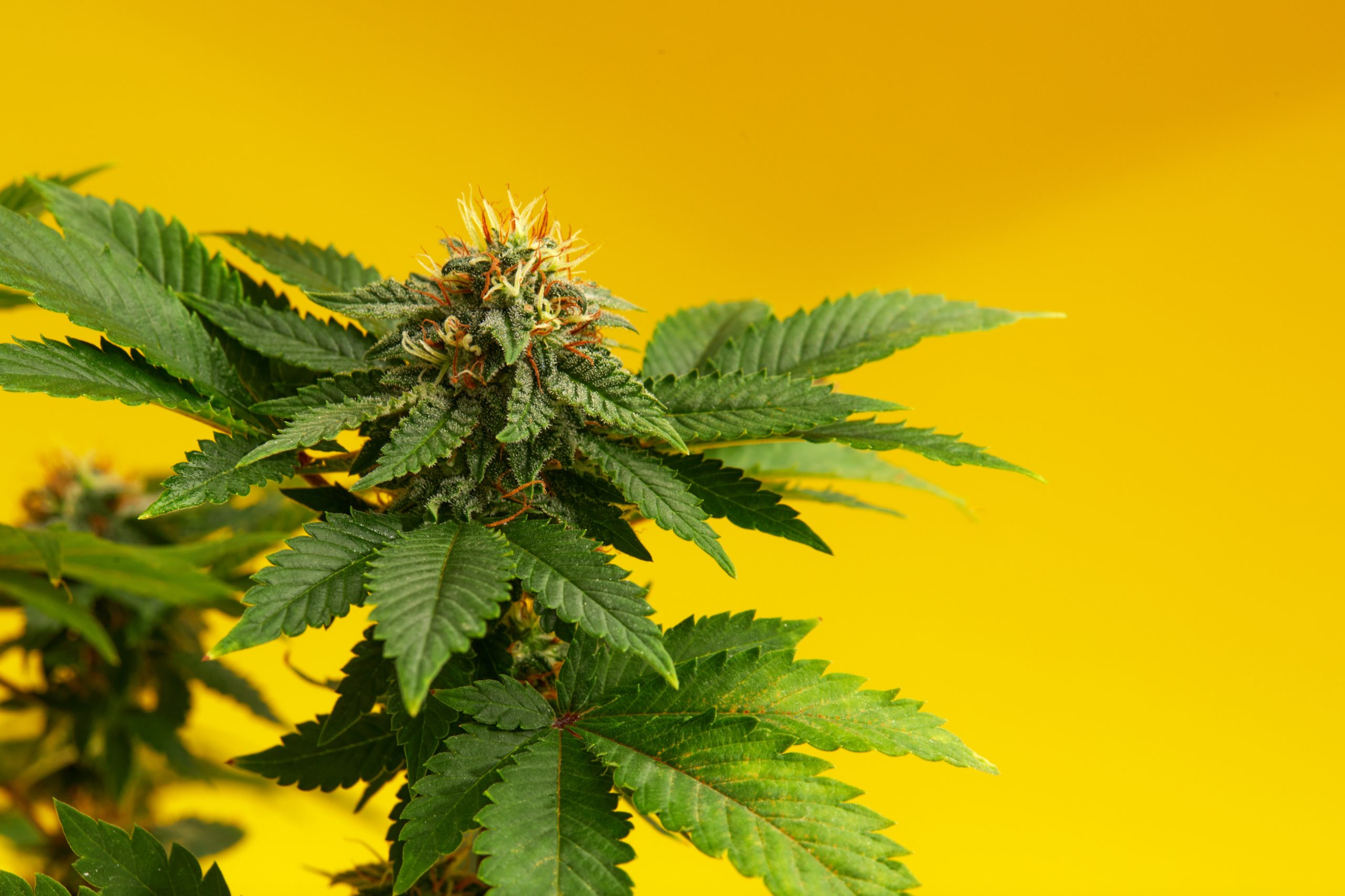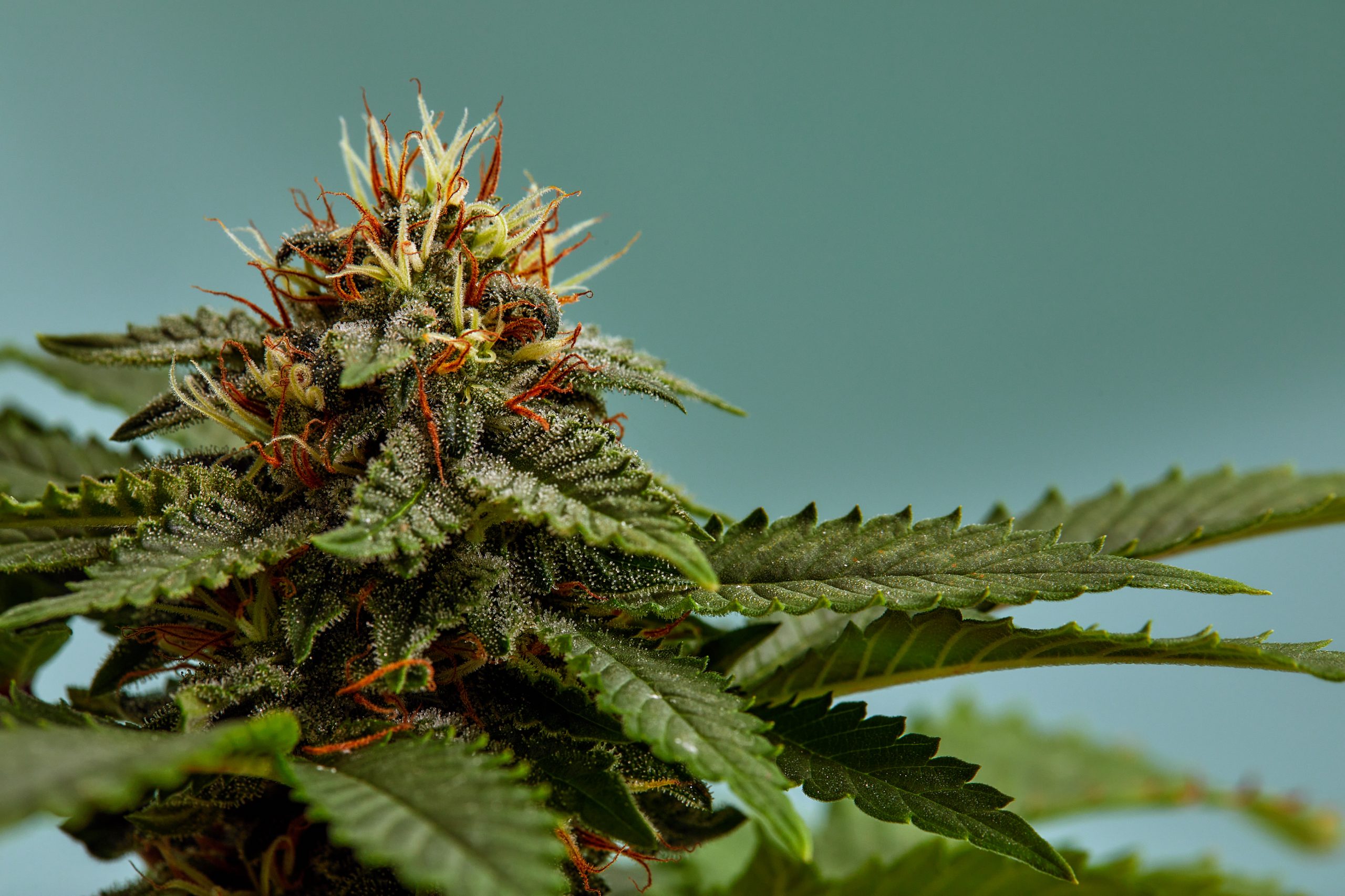Cannabis Industry News
Agrify Secures $10M Investment from Green Thumb Industries and Names Interim CEO

Agrify Corporation, a U.S.-based provider of advanced cultivation and extraction technology for the cannabis sector, is undergoing a major transformation. The company has secured $20 million in financing, drawn in part from a $10 million convertible secured note issued by a wholly-owned subsidiary of Green Thumb Industries (GTI), one of the leading multistate cannabis operators in the U.S.
Alongside the financing deal, significant leadership changes have also been announced, marking a new phase for the company as it aims to strengthen its financial position and accelerate strategic growth.
Capital Infusion and Strategic Partnership
Under the new financing agreement, Green Thumb Industries committed to a $20 million secured note, with $10 million accessible at closing. The funds are expected to support Agrify’s operations and future expansion plans. The move follows Green Thumb’s earlier acquisition of common stock and warrants in Agrify, which were previously held by the company’s outgoing CEO and chairman, Raymond Chang, and board director, I-Tseng Jenny Chan.
The transactions, while independent of Agrify’s daily operations, establish Green Thumb as a significant stakeholder in the company and signal a stronger strategic alignment between the two cannabis-focused enterprises.
Leadership Overhaul and New Appointments
As part of the transition, Raymond Chang has stepped down as Agrify’s CEO and Chairman, while I-Tseng Jenny Chan has exited her position on the board. To fill the leadership gap, the board has appointed Ben Kovler, Founder and CEO of Green Thumb Industries, as Interim CEO and Chairman of Agrify.
Kovler will continue his executive responsibilities at Green Thumb, while also guiding Agrify through this period of change. His deep experience in scaling cannabis businesses and navigating complex regulatory and financial environments positions him to help optimize Agrify’s operations and unlock value from its non-plant-touching technology assets.
Additionally, Richard Drexler and Armon Vakili have joined Agrify’s board. Drexler brings over four decades of corporate leadership and board governance experience, while Vakili currently serves as VP of Strategic Initiatives & Partnerships at Green Thumb, with a background in M&A, private equity, and finance.
With these changes, Agrify’s board now includes six directors, the majority of whom are independent, reflecting a stronger governance structure.
What This Means for Agrify
Agrify has built a reputation as a provider of high-tech cultivation and extraction systems, known for its Vertical Farming Units (VFUs) and a robust suite of extraction equipment. These technologies aim to optimize cannabis production with precision-controlled environments and scalable solutions, targeting increased yield, quality, and return on investment for licensed producers.
While Agrify does not handle cannabis directly—focusing instead on the infrastructure and technology that supports licensed cultivators and processors—it remains an important player in the cannabis supply chain.
With this strategic investment, Agrify gains more than just capital—it now has direct access to Green Thumb’s operational expertise, retail insights, and expansive network in the U.S. cannabis market. The collaboration is expected to accelerate Agrify’s ability to execute on growth initiatives and improve operational efficiencies.
Financial Restructuring in a Volatile Market
The timing of this capital infusion is particularly relevant, as the broader cannabis industry continues to face macroeconomic pressures, including tightening capital markets, regulatory uncertainty, and slowing legalization momentum at the federal level.
Many companies in the cannabis ecosystem—especially those providing ancillary services or technology—have faced challenges securing growth capital. Agrify’s successful negotiation of this financing reflects investor confidence in its core offerings and long-term potential.
This partnership also provides Green Thumb with a strategic foothold in cannabis technology, without directly expanding its cultivation or retail footprint—a move that could yield strong upside as demand for efficient and consistent cannabis production solutions grows.
Outlook and Opportunities Ahead
With fresh capital and a new leadership team in place, Agrify is well-positioned to focus on the following priorities:
- Refining and expanding its Vertical Farming and extraction solutions
- Pursuing strategic partnerships with MSOs and producers seeking advanced cultivation systems
- Exploring broader applications of its controlled environment agriculture (CEA) technologies
- Enhancing operational efficiencies and cost structure to support sustainable growth
The company’s proprietary technologies, especially its VFUs and modular extraction systems, offer flexibility for operators facing regulatory hurdles, limited real estate, and the need for consistent quality—all pain points in today’s cannabis market.
As regulatory frameworks evolve and more markets come online, the demand for scalable, data-driven infrastructure will likely increase, positioning Agrify to capture market share among plant-touching and ancillary operators alike.
Final Thoughts
Agrify’s latest financing and leadership changes mark a turning point in its corporate trajectory. Backed by one of the most established cannabis companies in the U.S., and led by seasoned executives with a track record of performance, the company is now better equipped to execute its growth strategy in a competitive and capital-constrained environment.
By focusing on technology, scalability, and operational excellence, Agrify has the opportunity to solidify its role as a key enabler of innovation in cannabis cultivation and extraction—essential components of the evolving cannabis supply chain.
Cannabis Industry News
Tariffs and the Cannabis Supply Chain: How U.S. Businesses Are Adapting to Economic Headwinds

As cannabis operators in the U.S. navigate the complexities of a rapidly evolving industry, they now face another formidable challenge: shifting international trade policies. The recent reinstatement of steep tariffs under former President Donald Trump’s administration has put pressure on an already delicate cannabis supply chain, triggering a cascade of operational adjustments among producers, packagers, and distributors.
With tariffs ranging from 10% to more than 100% on a variety of imported goods, cannabis-related businesses that rely heavily on global manufacturing—particularly from Asia—are being forced to rethink long-standing logistics strategies. The new trade environment is not just a test of financial endurance but a stress test of agility, supply chain diversification, and risk management in a sector still maturing.
A Global Supply Chain Under Pressure
The cannabis industry’s reliance on international manufacturing is no secret. From packaging materials and pre-roll machinery to vape hardware and raw inputs, much of the sector’s critical infrastructure is sourced from global markets, especially China, Indonesia, and India.
These countries have been preferred partners not only due to cost efficiency but also because of their manufacturing capabilities, scale, and speed. However, as newly reimposed tariffs drive up the cost of importing these materials, companies are being forced to examine alternatives—some more viable than others.
Several operators have already begun reallocating parts of their production to secondary markets such as Malaysia, Taiwan, or Vietnam. Others are experimenting with onshoring portions of their supply chains back to the United States. Yet these shifts are often not straightforward; domestic infrastructure for specialized cannabis products remains underdeveloped, particularly when it comes to highly customized or small-batch manufacturing.
Rising Costs and Operational Trade-Offs
One of the immediate consequences of the tariff spike is an increase in production costs across the board. Businesses are now contending with a multi-layered cost structure that impacts not just raw materials but also labor, shipping, and warehousing. These increases are particularly difficult for companies operating in high-cost compliance states, where profit margins are already slim due to taxation, regulatory overhead, and price competition.
To manage these pressures, many companies are adapting in the following ways:
- Restructuring their logistics networks by shifting imports to less tariff-heavy regions.
- Consolidating packaging and labeling runs to reduce per-unit production costs.
- Investing in automation to reduce reliance on international labor and shorten production cycles.
- Building domestic partnerships with U.S.-based suppliers to insulate parts of their operation from trade volatility.
However, these adjustments come with their own costs and limitations. Not all products can be easily moved to a domestic facility, and retrofitting operations to accommodate local production may require capital outlays that smaller operators simply can’t afford.
Logistics and Distribution Face Ripple Effects
Tariffs don’t just impact product manufacturing—they also reverberate through the entire fulfillment and distribution chain. Cannabis logistics companies, which handle warehousing, transport, and last-mile delivery, are now facing inflated operational costs from imported vehicle fleets, routing technologies, and even temperature-controlled equipment used to transport perishable products like edibles or live resin.
As logistics become more expensive and uncertain, many companies are responding with tighter inventory management, improved routing software, and bundled service models to reduce redundancies. The goal is to maintain service levels without transferring too much of the cost burden to retail partners or end consumers—though many acknowledge that some level of price increase may become unavoidable.
The Consumer Experience May Shift
For consumers, the immediate impact may not be felt at the register—but industry insiders warn that changes are likely on the horizon. As supply costs rise and companies are squeezed between shrinking margins and growing overhead, the end result may be leaner product selections, higher shelf prices, or delays in new product launches.
Operators in ancillary sectors like accessories and packaging are also evaluating whether to absorb tariff-related costs or pass them on to dispensaries and their customers. For now, some are choosing to hold prices steady in order to protect brand loyalty, but this strategy may be difficult to sustain if inflationary pressures persist.
In the long run, consumers may begin to see subtle shifts in packaging aesthetics, material quality, or bundle sizes as brands recalibrate offerings to maintain profitability in a high-cost environment.
The Risk of Market Imbalance
A potential unintended consequence of escalating trade restrictions is the growth of unregulated markets. As licensed businesses contend with cost pressures, unlicensed operators—often unencumbered by the same tax and compliance burdens—may gain competitive advantage by offering cheaper products and faster delivery.
This could incentivize some consumers to shift toward gray or illicit market options, particularly in regions where enforcement is uneven or where legal cannabis remains comparatively expensive. Policymakers and regulators will need to consider this dynamic carefully, especially in states where legalization has been built on promises of consumer safety, tax revenue, and reduced black-market activity.
Is Onshoring the Long-Term Solution?
While some operators are exploring domestic manufacturing as a long-term solution, structural limitations remain. U.S. facilities may offer improved lead times, regulatory alignment, and greater control—but at significantly higher cost, especially for labor-intensive processes like hand-rolling cones or assembling vape cartridges.
For this reason, most companies are pursuing hybrid approaches: shifting select product lines stateside while maintaining offshore relationships for high-volume or commodity items. Others are leveraging the situation as an opportunity to invest in R&D and reevaluate product formats that are less reliant on tariff-exposed materials, such as pod-based vape systems or minimalist packaging designs.
A Test of Industry Maturity
Ultimately, the tariff issue underscores the cannabis industry’s transition into a more mature, resilient sector. What began as a grassroots movement is now a multi-billion-dollar supply chain exposed to global economic currents. Operators that succeed in this next phase will be those that invest in supply chain agility, diversified sourcing, and cost control without compromising product quality or brand integrity.
Tariffs are just one of many evolving variables in the cannabis economy—but they serve as a reminder that in an interconnected marketplace, adaptability isn’t optional—it’s a prerequisite for survival.
Cannabis Industry News
Cannabis Use Rises in Response to Political Stress: A 2025 Consumer Snapshot

As the United States adjusts to the early stages of Donald Trump’s second term, cannabis consumers appear to be recalibrating their habits—not just around preference or strain, but around coping itself. While cannabis has long been intertwined with wellness, stress relief, and cultural expression, new consumer behavior suggests that political and economic volatility is increasingly shaping how—and why—Americans engage with cannabis.
Rising inflation, social unrest, and sweeping government reforms have created a collective tension that is pushing many toward cannabis as a steadying presence in uncertain times. Whether as a substitute for alcohol, a buffer against anxiety, or a gateway to self-regulation, cannabis appears to be more than just a recreational outlet in 2025—it’s becoming an emotional anchor.
Younger Adults and Women Are Leading the Shift
One of the most pronounced shifts in 2025 is occurring among young adult consumers, especially women aged 21 to 34. Data collected from recent consumer trend reports indicate that this demographic is not only increasing their cannabis consumption more than others, but also doing so with a clear sense of intention.
Rather than associating cannabis solely with leisure, these users are engaging with products through a wellness lens, seeking out microdosing formats, low-THC ratios, and hybrid flower strains specifically marketed for stress relief, mood balancing, and mental clarity. For many, cannabis is becoming part of their daily rituals—whether it’s winding down after doom-scrolling the news or setting a calmer tone at the start of a work-from-home day.
This represents a fundamental evolution in cannabis culture, moving away from the archetype of occasional indulgence and toward habitual, purposeful use.
Inflation, Affordability, and the Price-to-Relief Ratio
In a year marked by economic anxiety, consumers are carefully weighing how they spend. Yet cannabis, unlike other discretionary categories, is holding its ground. While nearly every sector—dining, travel, entertainment—is facing demand softening, cannabis spending is showing resilience.
That’s not to say cost isn’t a concern. A growing portion of consumers report trimming expenses elsewhere to maintain their cannabis purchases. And interestingly, many of those who say they are increasing their usage also cite value-based product selections—such as larger pre-roll packs, discount ounces, or dual-purpose products like THC-CBD blends that combine relief and relaxation.
For this group, cannabis isn’t a luxury; it’s a mental health necessity with a higher perceived ROI (return on investment) than many other coping mechanisms.
Distrust in Retail Products Fuels Interest in Home Cultivation
Even as the legal market expands and matures, a significant number of consumers remain skeptical about the transparency of retail cannabis. Reports of product recalls, inconsistent testing standards, and labeling inaccuracies have planted seeds of doubt—especially among those who use cannabis for wellness or medicinal purposes.
As a result, home cultivation is gaining traction, not just as a hobby, but as a consumer rights movement. Among current cannabis users, a growing share say they would prefer to grow their own plants if legal and feasible. For many, the motivation isn’t just about savings; it’s about control, trust, and purity.
Although the legal frameworks for home growing vary from state to state, this trend suggests that personal cultivation may be on track to become a normalized part of cannabis culture, much like home brewing did during the early craft beer movement.
Product Preferences Reflect Broader Societal Shifts
Cannabis products in 2025 are being shaped by more than just potency or price—they’re being shaped by sentiment. Among the top-selling product categories this year are:
- Fast-acting edibles marketed for anti-anxiety and sleep support
- THC-infused beverages as alcohol substitutes
- Low-dose tinctures and capsules designed for mood management
- Topicals and aromatherapy-style balms for at-home stress rituals
These products are often branded in calming palettes with affirming language—”reset,” “unwind,” “clarity”—and appeal to a consumer base that’s not just looking to get high, but to feel grounded amid national turbulence.
This reflects a broader shift in consumer expectations, where cannabis is not merely transactional but therapeutic, intuitive, and holistic.
Legal Fears and Policy Confusion Create Mixed Signals
Even in legal states, concerns about enforcement and overregulation remain. A notable segment of consumers who are eligible to grow their own cannabis or purchase from licensed dispensaries still report hesitation due to perceived legal risks or confusion about what’s allowed under changing state laws.
This hesitancy reveals a gap in consumer education—and an opportunity for brands and advocacy organizations to clarify local regulations, dispel myths, and empower consumers to engage with cannabis confidently.
It also highlights the strange duality of being a cannabis consumer in 2025: legal in principle, stigmatized in practice. And for politically engaged users, that contradiction only adds to the urgency of normalizing use as a legitimate form of wellness and personal autonomy.
Looking Ahead: A Political Stress Test for Cannabis Culture
In past decades, cannabis consumption often spiked during moments of cultural upheaval. From anti-war protests to economic recessions, cannabis has long served as both an act of resistance and a tool for resilience. What we’re seeing now in 2025 is not entirely new—but it is more mainstream, measurable, and multidimensional than ever before.
This year, cannabis consumption patterns are becoming a reflection of political and emotional fatigue—a nonverbal statement that many Americans feel more agency in choosing their coping methods than they do in choosing their elected officials.
It also underscores the growing understanding that cannabis is not a trend but a toolkit, with distinct benefits that meet a wide array of emotional, psychological, and even political needs.
Final Thoughts
As the country navigates a politically volatile climate, cannabis use is increasing not as an escape, but as a way to manage the moment. Consumers are redefining their relationship with cannabis—using it not just to unwind, but to stabilize, to reclaim a sense of balance, and to respond to the world around them on their own terms.
This consumer-driven evolution is shaping not just the future of cannabis retail but also how we understand public health, political engagement, and self-care in the 21st century.
Cannabis Industry News
Leadership Shakeup in NYC Sparks Questions About the Future of Urban Cannabis Programs

The departure of Dasheeda Dawson, the founding executive director of Cannabis NYC, has ignited a wave of speculation and scrutiny in New York’s cannabis community. While personnel changes are common in new government-led industry initiatives, this one carries greater implications—not only because of Dawson’s public profile, but also because of the timing.
As New York City continues to roll out its complex and often controversial adult-use cannabis market, the resignation of its most prominent cannabis policymaker marks a pivotal moment in the city’s effort to build an equitable industry from the ground up.
A Pioneering Appointment
Launched in 2022 under the NYC Department of Small Business Services, Cannabis NYC was created to support license applicants, guide regulatory implementation, and position the city as a hub for inclusive cannabis entrepreneurship. Dawson, a veteran cannabis policy strategist with prior leadership roles in Oregon and national cannabis equity circles, was tapped to lead the effort.
During her tenure, Dawson was widely credited with raising visibility for the city’s cannabis equity goals and launching community-facing initiatives meant to support underrepresented entrepreneurs, legacy operators, and small businesses navigating the evolving legal market.
From educational workshops and compliance bootcamps to support for women- and BIPOC-owned businesses, Cannabis NYC under Dawson took bold steps to bridge the gap between policy ambition and market access. Her departure, announced via LinkedIn, comes just as many of these initiatives are moving into more operational and enforcement-heavy phases.
Timing Raises Eyebrows—and Tensions
Dawson’s resignation arrives at a particularly sensitive time for New York’s legal cannabis market. After months of legal battles, regulatory delays, and uneven retail rollout, many stakeholders are looking to city and state agencies for stability and long-term clarity.
For some, Dawson’s departure raises questions about how aligned city and state cannabis priorities truly are. As dispensary openings continue to face bureaucratic hurdles and court-ordered pauses, business owners and advocacy groups alike are calling for more transparent leadership transitions and consistent messaging from public agencies.
The concern isn’t just about personnel—it’s about continuity in vision and execution.
The Bigger Picture: A Test for Urban Cannabis Governance
More than a local HR shakeup, this event reflects broader issues facing cannabis leadership structures in urban centers. As cities like New York attempt to build out cannabis economies that are not only profitable but equitable, the demands on municipal agencies—and their leaders—are high.
Balancing stakeholder expectations, political interests, community equity commitments, and regulatory compliance is a tightrope few have walked successfully. And while New York’s goals are ambitious, the leadership turnover underscores the fragility of those efforts when they’re tied too closely to individual figures.
This moment offers a critical opportunity for Cannabis NYC—and other similar municipal programs across the country—to assess whether they have the internal infrastructure, succession planning, and community trust needed to withstand changes in leadership without losing direction.
Controversy Complicates the Narrative
Though the official narrative frames the resignation as a career transition toward broader industry engagement, external factors have also fueled public curiosity. Reports of an ongoing investigation into workplace misconduct, which surfaced around the same time as the resignation, have created a distracting cloud over what had otherwise been a widely supported leadership run.
For an industry that often champions transparency and accountability, the intersection of personal conduct and public leadership can be especially damaging if left unaddressed. While details remain under review and no formal conclusions have been made, the optics are difficult to ignore. Leaders in the cannabis space are increasingly held to high ethical and professional standards—particularly when representing equity-forward programs in a highly scrutinized market like New York.
What Comes Next for Cannabis NYC?
As Dawson moves on, the city is expected to announce interim leadership in the coming weeks. Whether the agency maintains its current roadmap or pivots in a new direction remains to be seen. Key questions now facing the program include:
- Will current pilot programs and equity workshops continue on schedule?
- How will the agency handle transparency amid ongoing investigations?
- Can the next leader build the same level of grassroots trust?
- How will this leadership change affect license processing and small business support?
The success of Cannabis NYC may now depend less on the charisma of a single leader and more on the strength of the systems left behind.
Final Thoughts
The resignation of Dasheeda Dawson is more than a personnel update—it’s a reflection of the high-stakes nature of cannabis governance in the post-prohibition era. With trust, transparency, and execution under the microscope, public agencies must prepare for transitions like this without destabilizing the broader market they’re tasked with guiding.
As New York City continues its journey toward a regulated, inclusive cannabis industry, the next chapter of Cannabis NYC will be closely watched—not just by local stakeholders, but by other municipalities nationwide facing similar challenges in the push toward equity-centered legalization.
-

 Legalization And Regulations6 months ago
Legalization And Regulations6 months agoRhode Island Finalizes Cannabis Regulations Ahead of Full Market Transition
-

 Legalization And Regulations6 months ago
Legalization And Regulations6 months agoFlorida’s Amendment 3 Fails: Recreational Marijuana Legalization Rejected Despite Trump’s Support
-

 Cannabis Product Reviews6 months ago
Cannabis Product Reviews6 months agoDr. Greenthumb’s x G Pen: A Compact Vaporizer With Big Style and Even Bigger Performance
-

 Cannabis Industry News7 months ago
Cannabis Industry News7 months agoLeadership Shakeup in NYC Sparks Questions About the Future of Urban Cannabis Programs
-

 Dispensaries5 months ago
Dispensaries5 months ago3 Dispensaries in New Mexico That Are Revolutionizing the Scene
-

 Cannabis Industry News7 months ago
Cannabis Industry News7 months agoTariffs and the Cannabis Supply Chain: How U.S. Businesses Are Adapting to Economic Headwinds
-

 Cannabis Product Reviews7 months ago
Cannabis Product Reviews7 months agoExploring the Entourage Effect: A Closer Look at The Terpene Store’s Natural Products Sample Pack
-

 Dispensaries6 months ago
Dispensaries6 months agoTop 3 Trendsetting Dispensaries in Michigan for 2025








